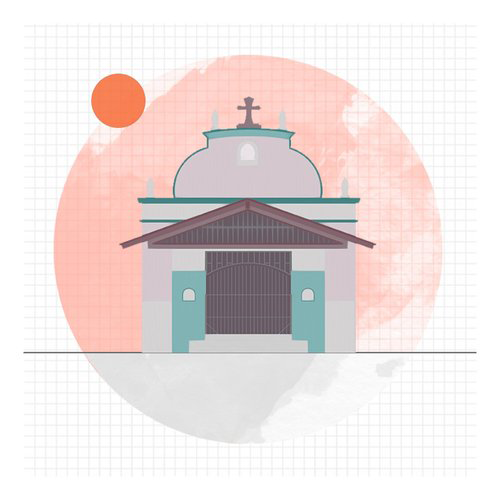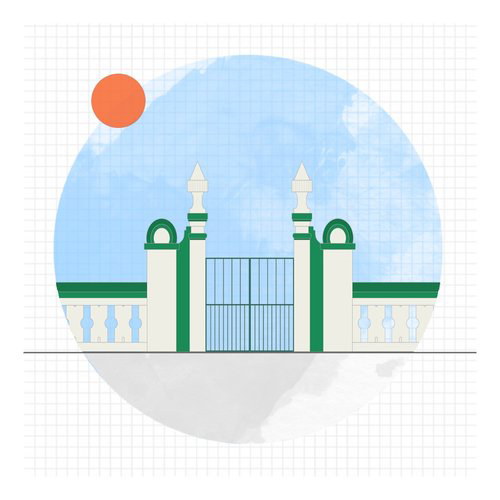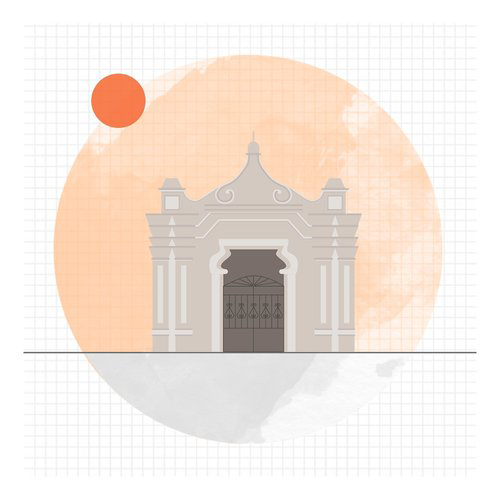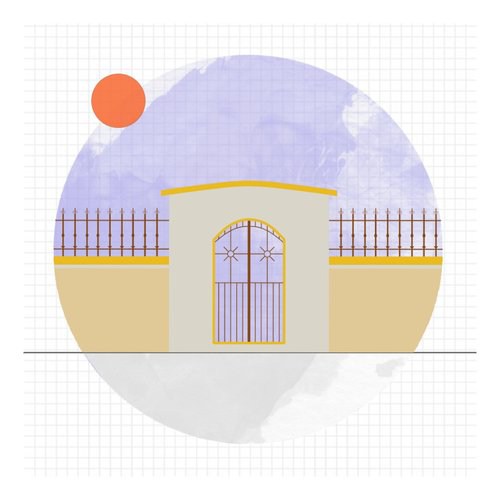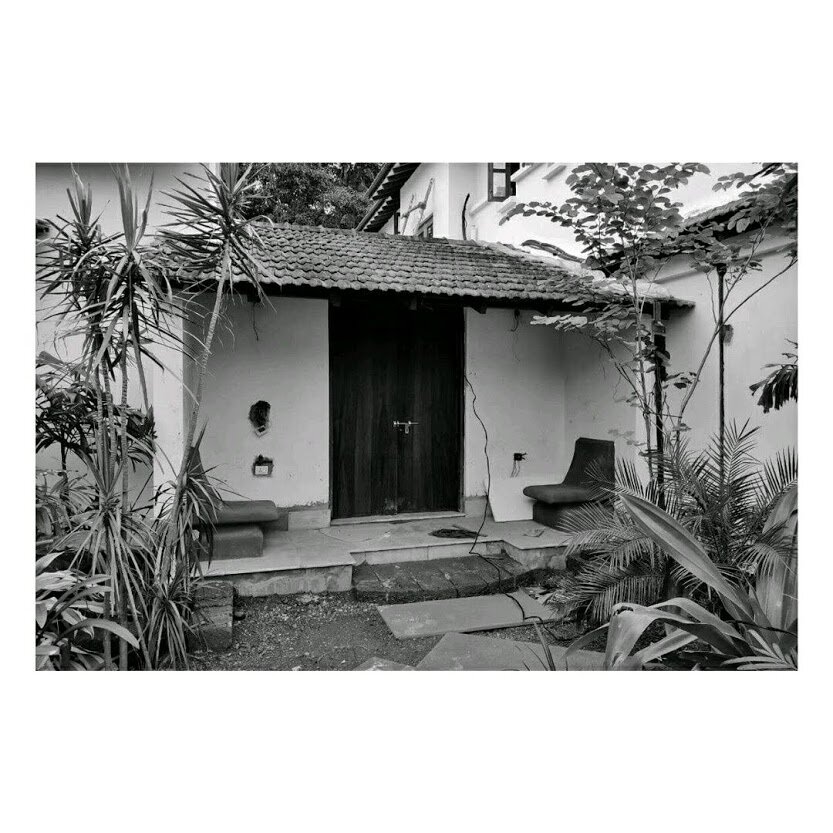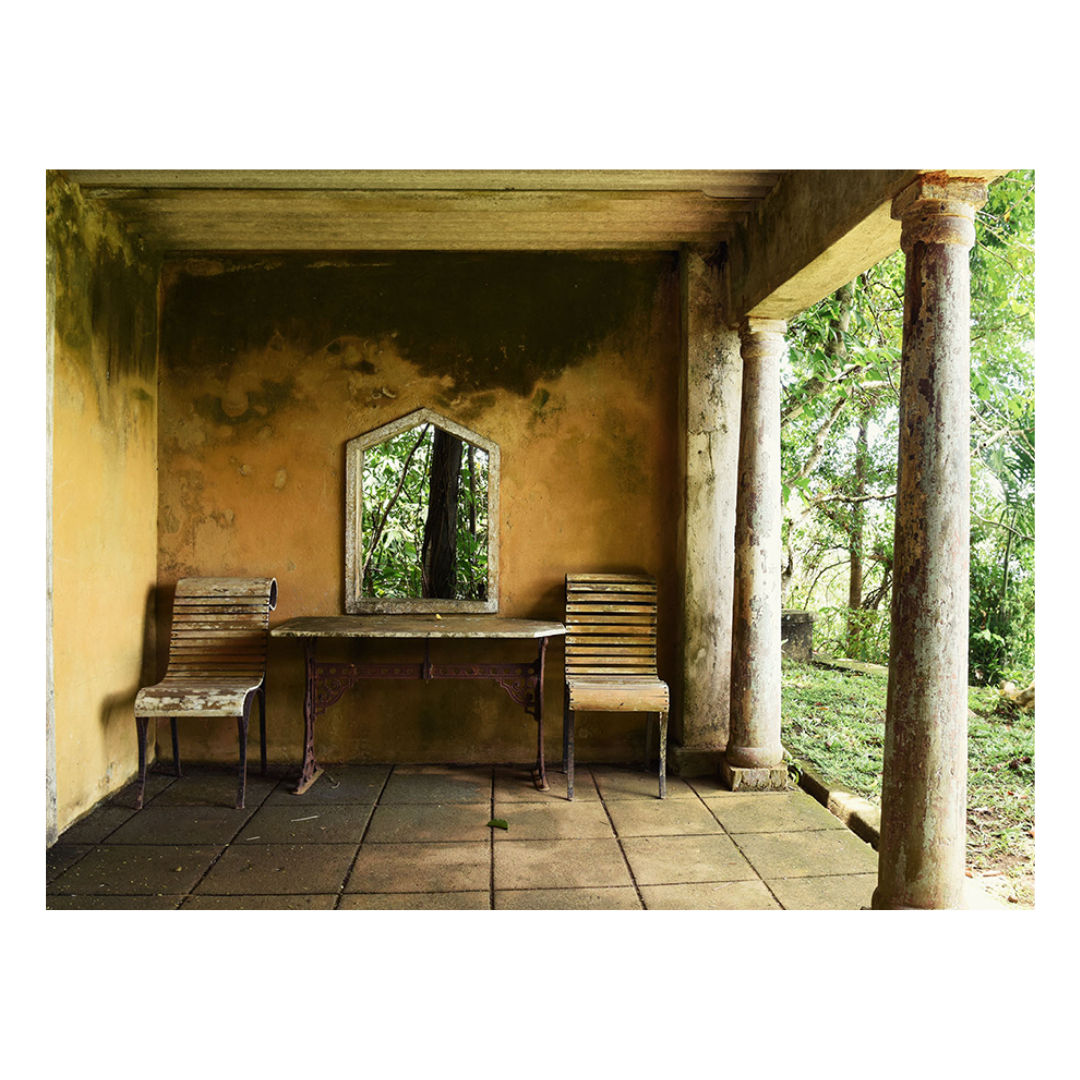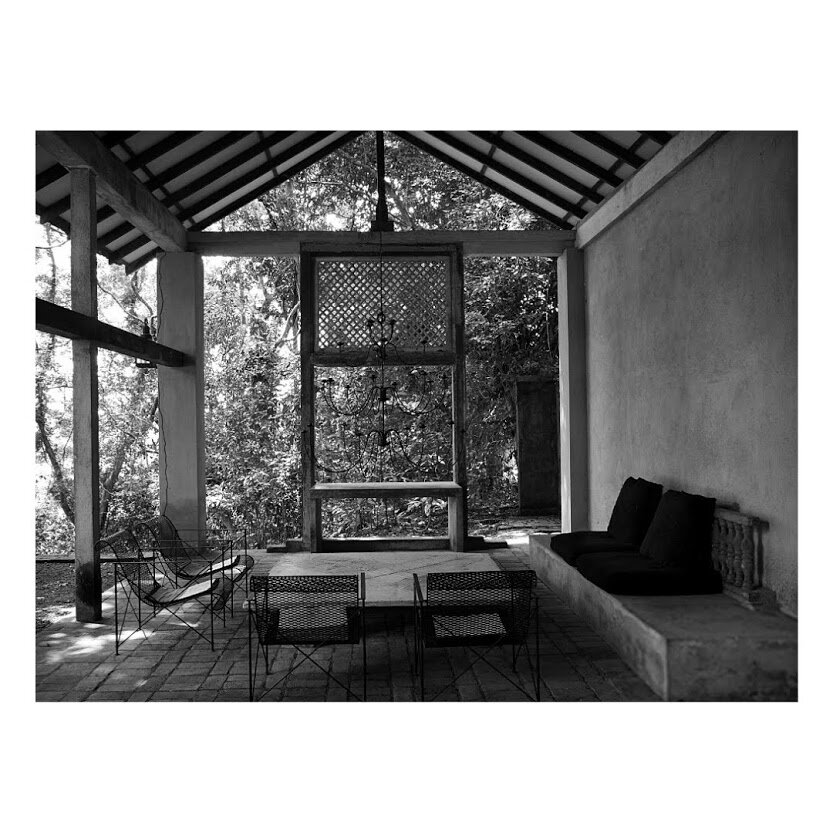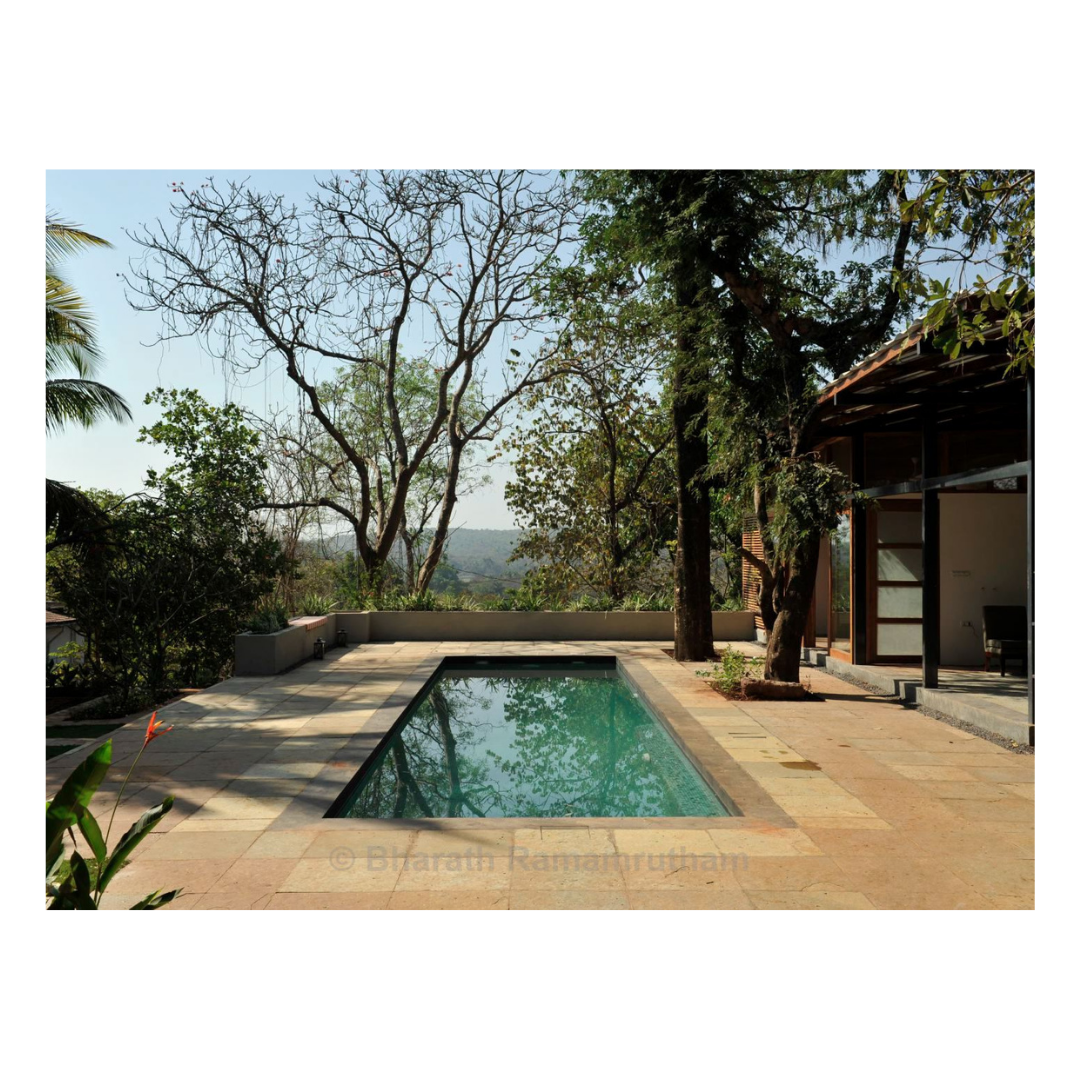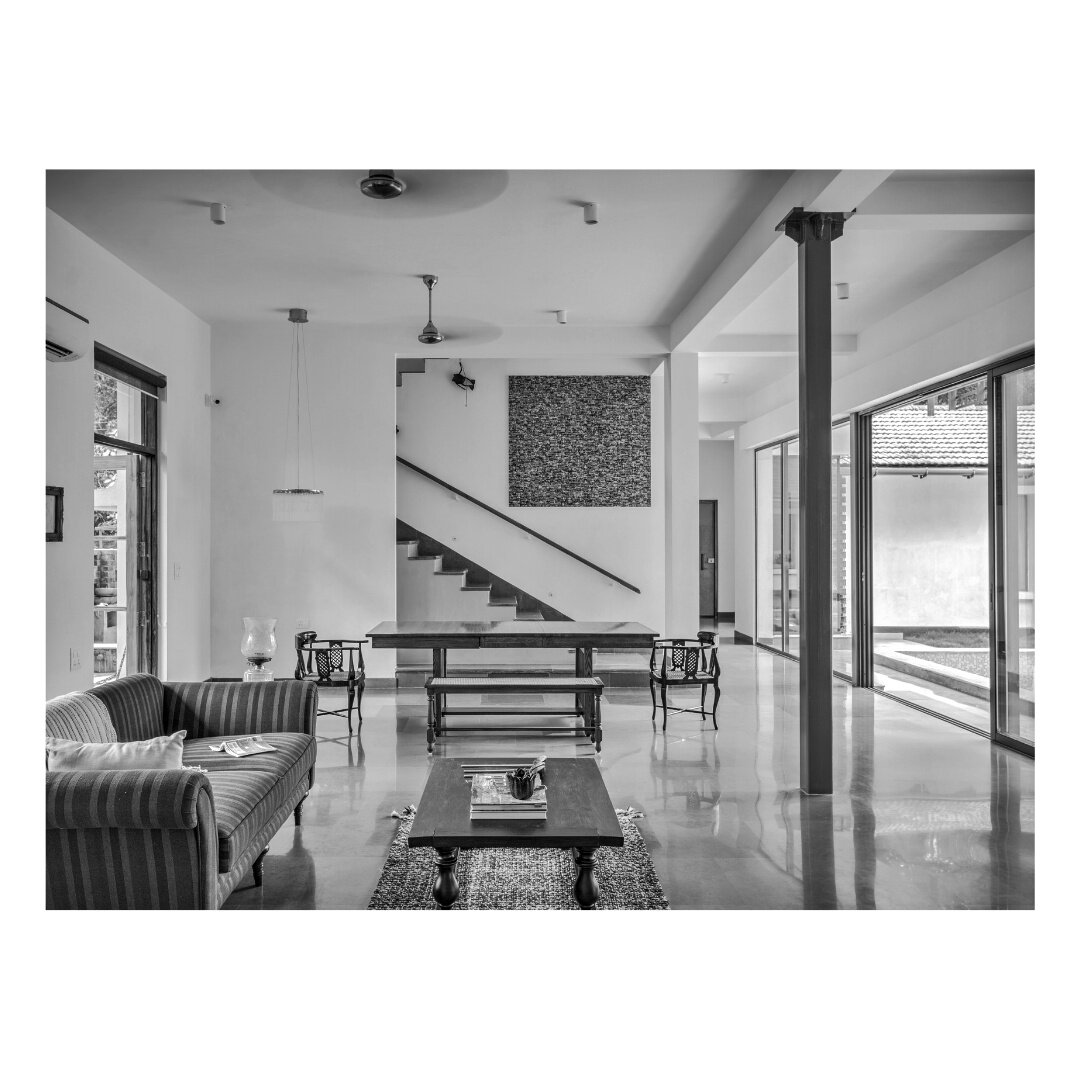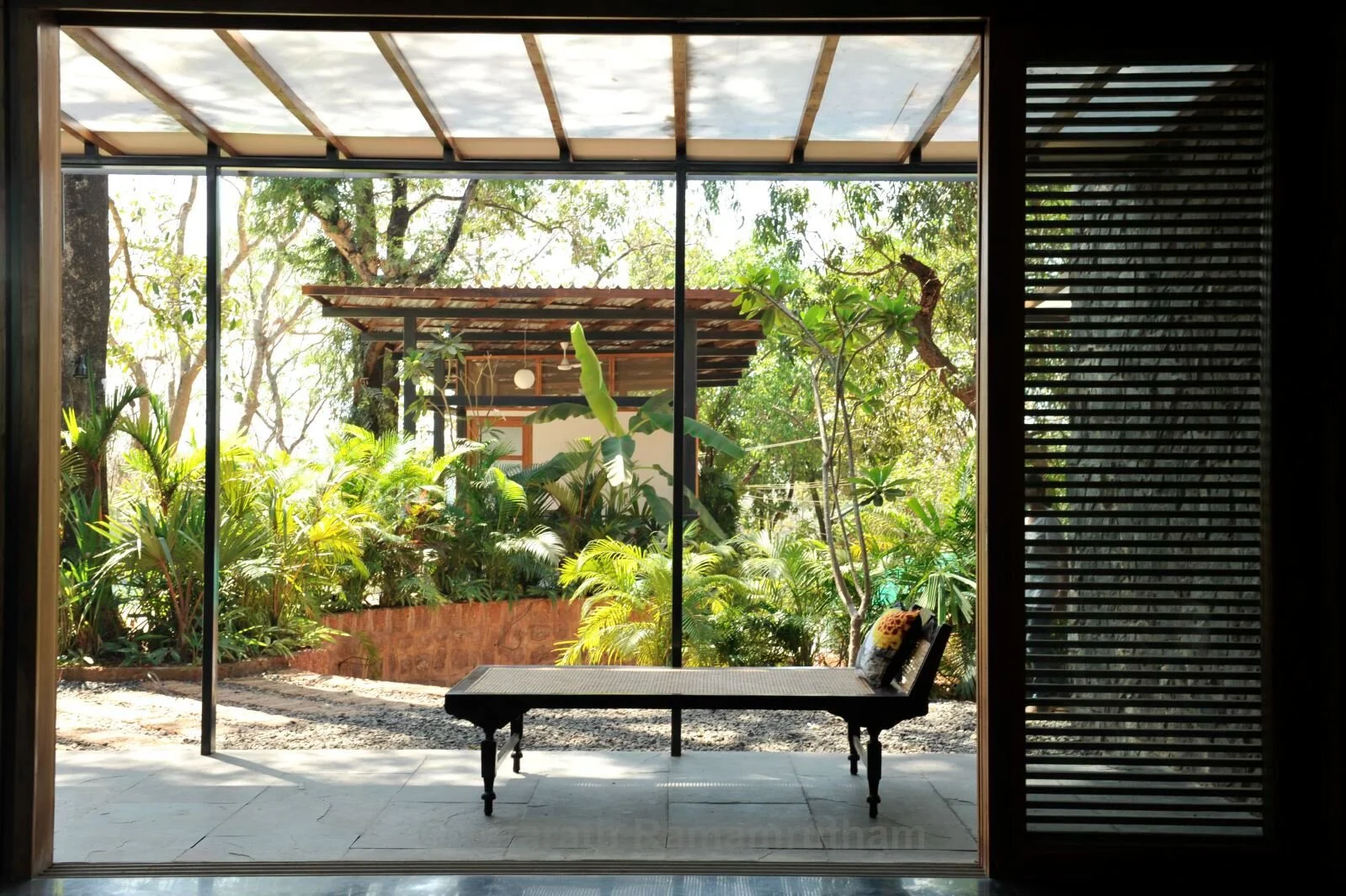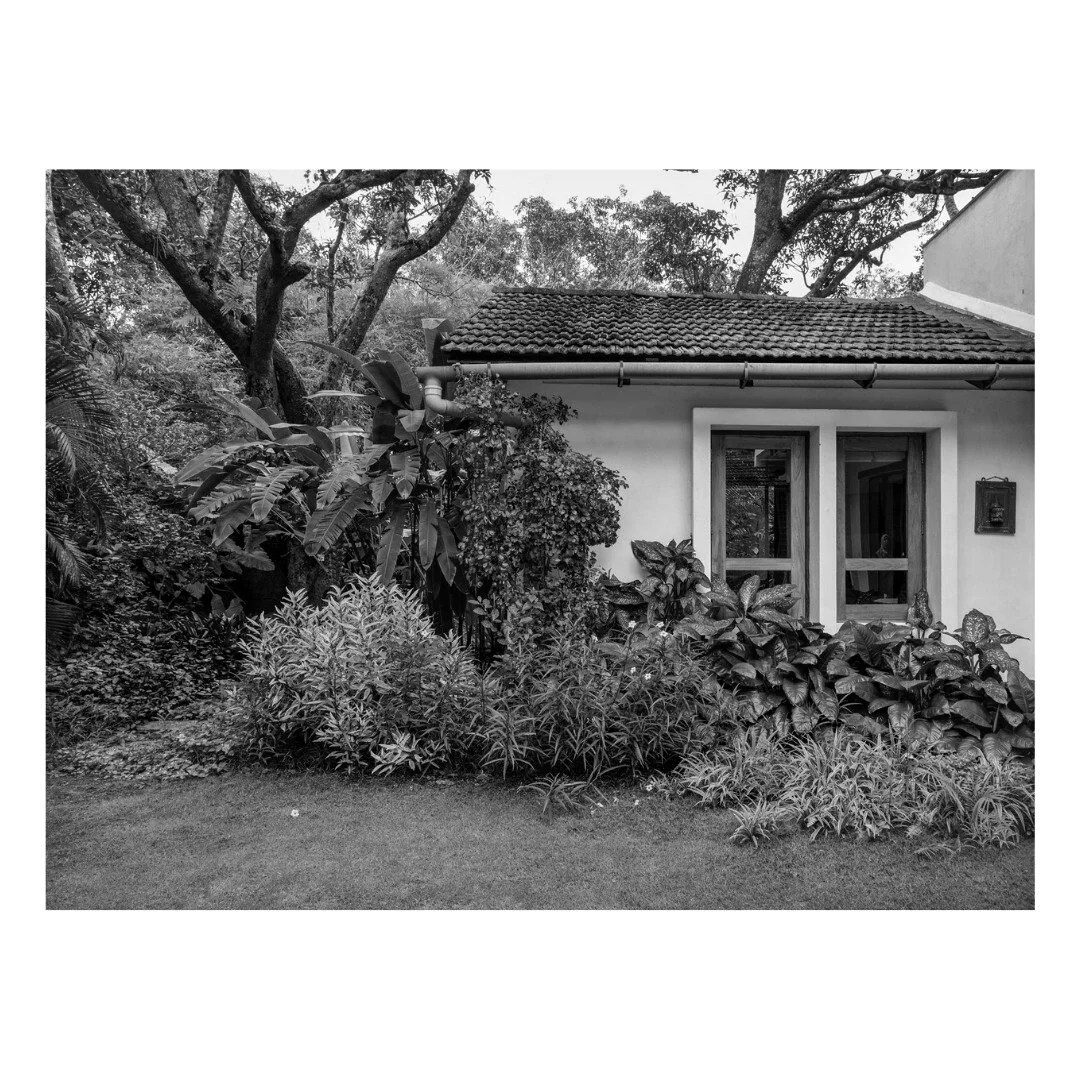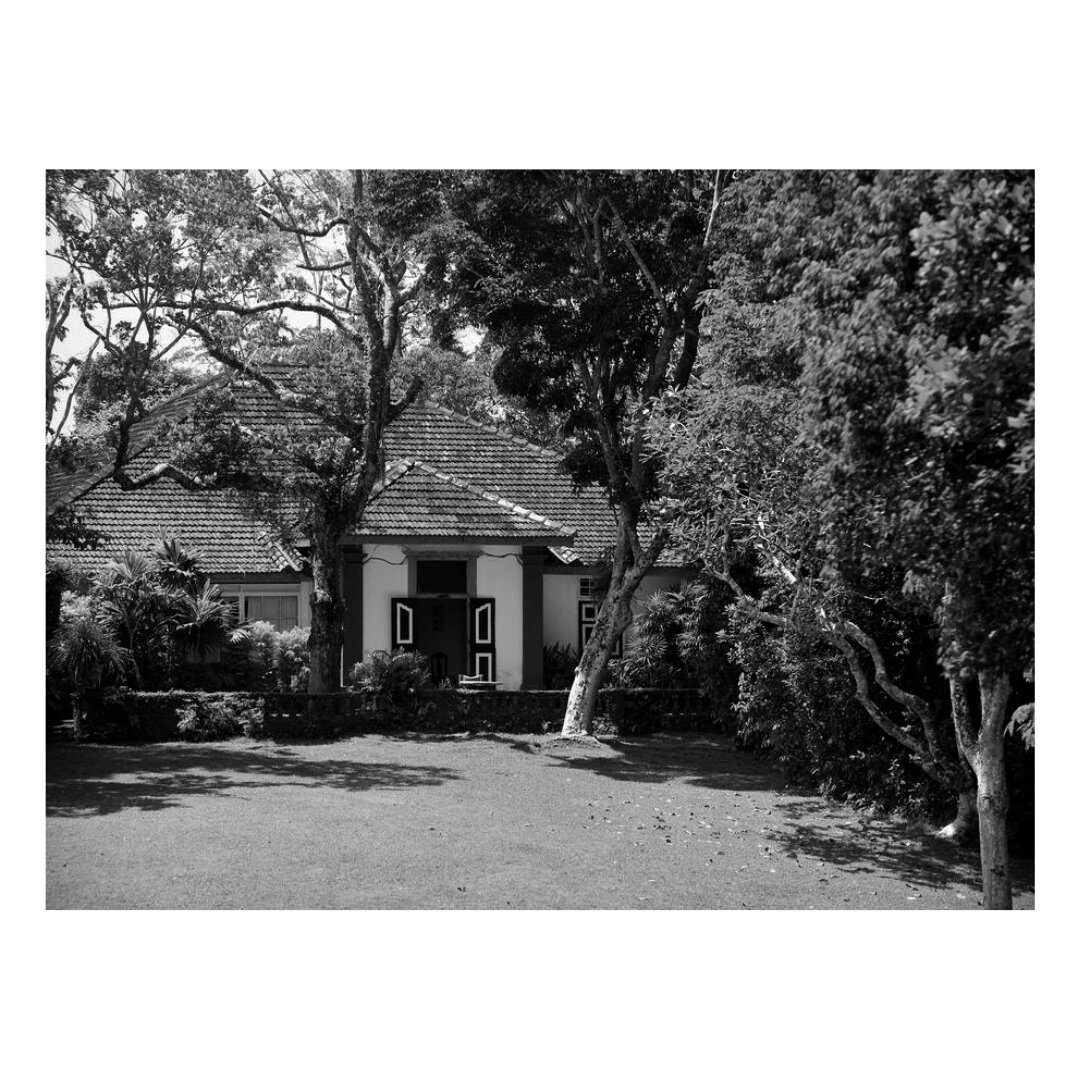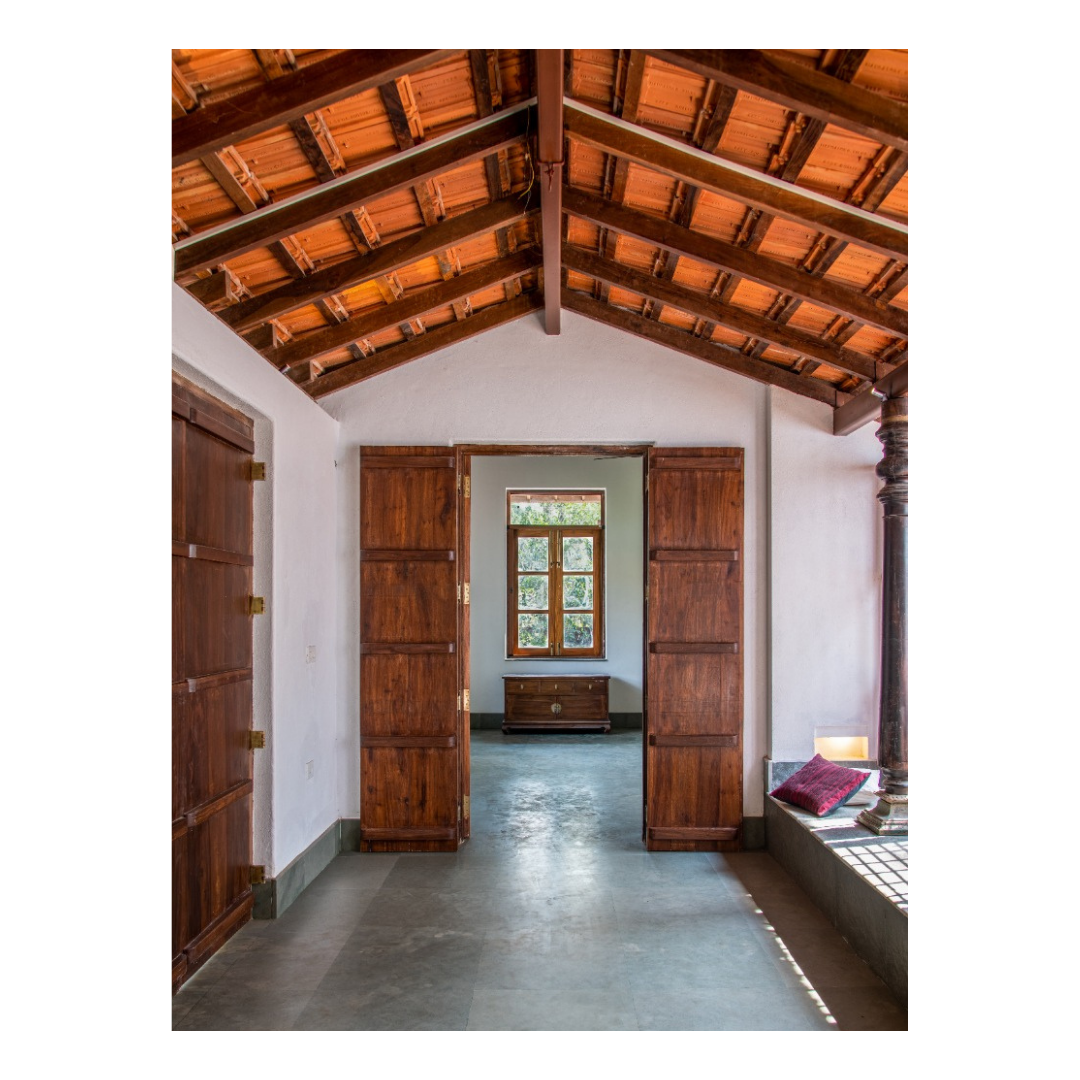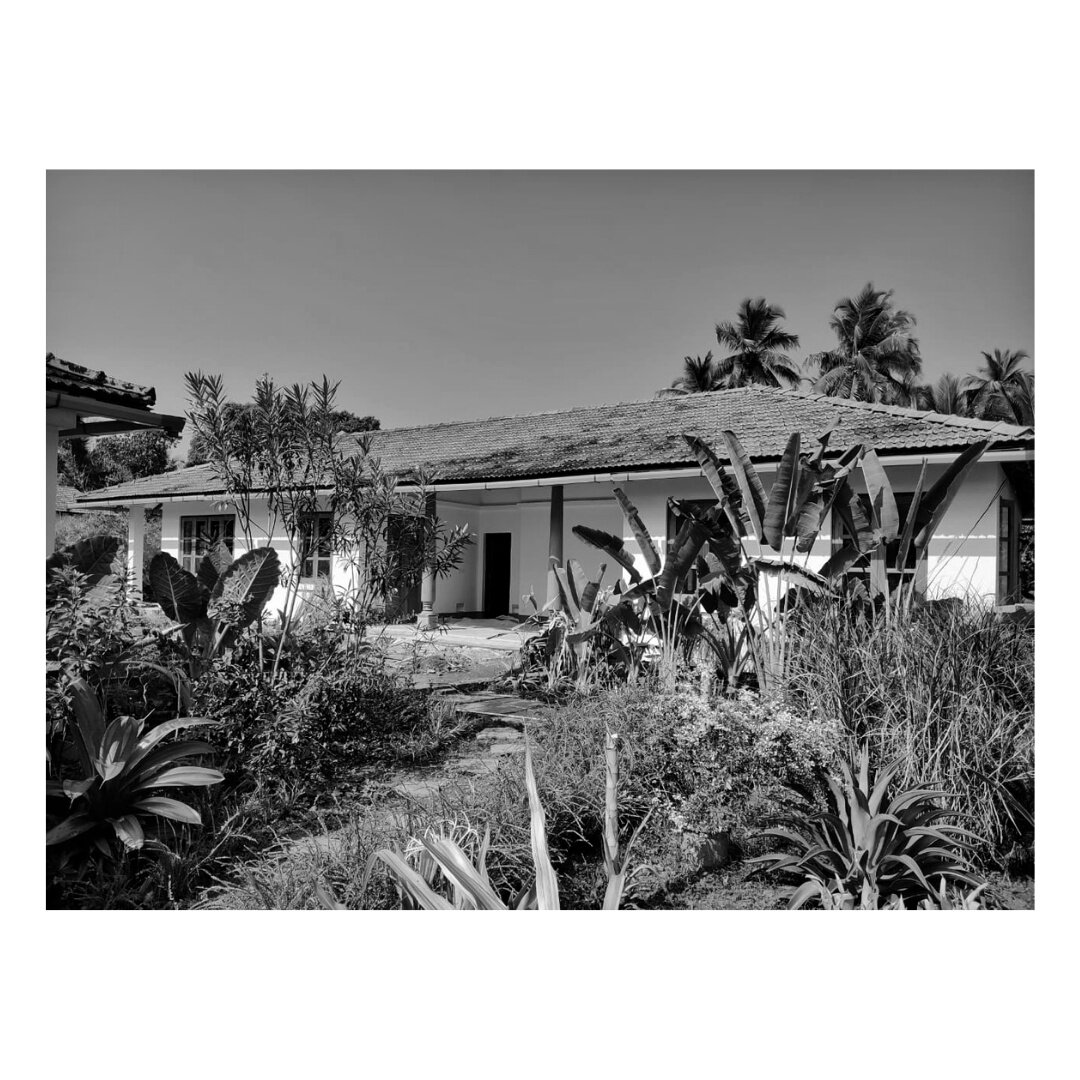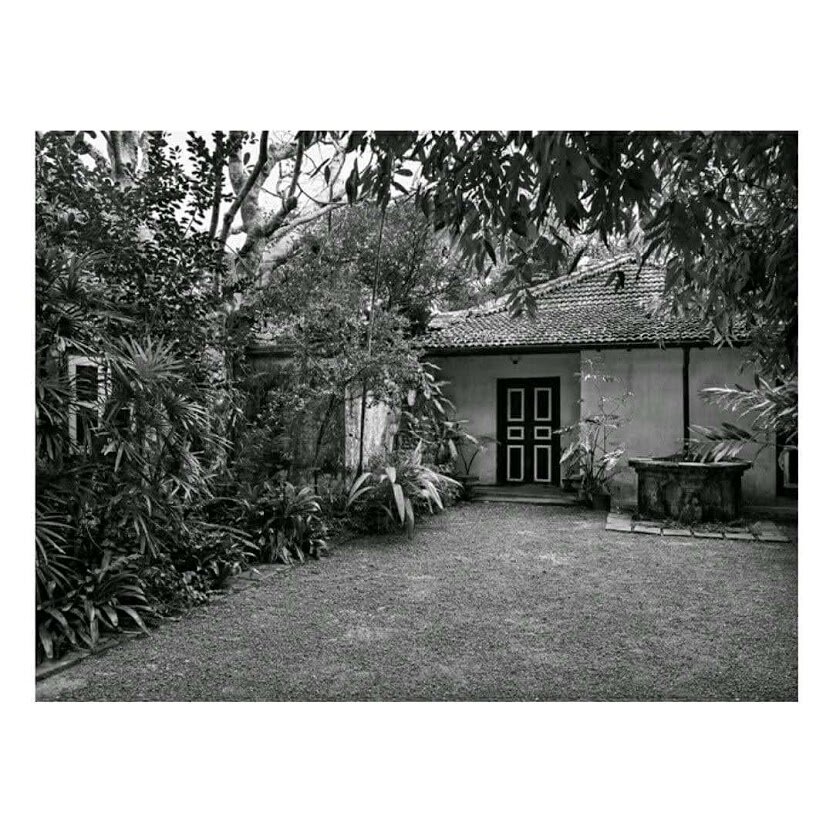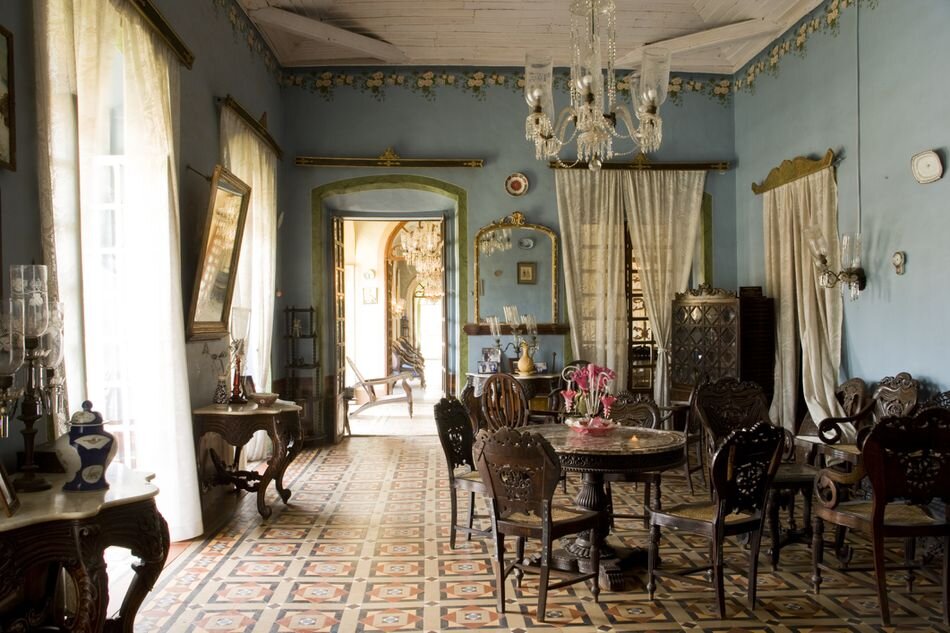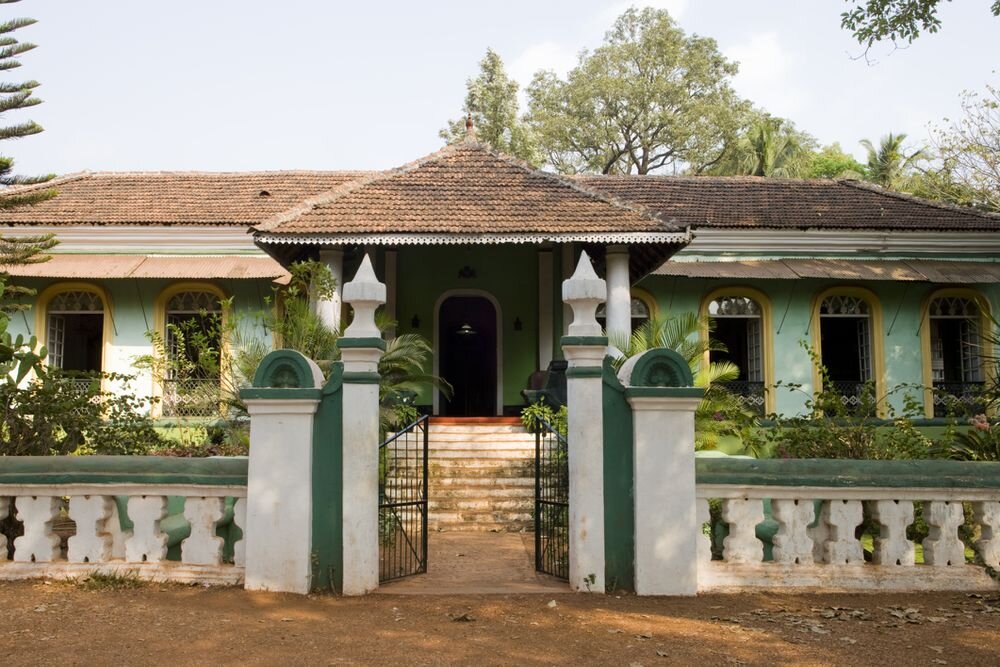I recently conducted an IG Live on taking A Site Positive Approach. As a follow up to that, I conducted another video session to get into details and answer pertinent questions about Rainwater Harvesting. I discuss the elements that make up a RWH system, compare the differences between rural and urban water management systems, and introduce some of the various options available for harvesting water. I also speak about the Goan monsoon patterns and the site specific methods that are useful in tropical areas. As an example, I explain the simple but effective well system created at Navovado, our completed vacation house in Goa. I also explore natural water systems such as ponds and bioswales which we have physically implemented at our project The House with Three Pavilions in Goa.
A Blog
with a curation of our design ideas and inspiration for houses in Goa, contemporary art and architecture.
Archive
- A Grounded Palette 12
- Architecture 86
- Art 22
- Bangalore 1
- Conservation 6
- Design 39
- Designing a House in Goa 16
- Ecological Design 20
- Environment 38
- Geoffrey Bawa/Bijoy Jain 6
- Goa Ecology 7
- House for Sale in Goa 20
- Interiors 17
- Landscape 3
- Landscape Design 9
- Life 23
- Lifestyle 10
- Living in Goa 34
- Mentoring 4
- Moving to Goa 24
- Navovado Project Update 4
- Nivim Project Update 33
- Press 11
- Resort-style Lifestyle 14
- Sustainable Architecture 20
- Sustainable Design 18
- Toybox 1
- Wellness 5
- reed bed 1
A few years ago we were set the task of designing an outdoor spa for one of our projects. The site was a house in Goa and surrounded by spectacular heritage buildings with unique forms and features that are no longer found in present day construction. We decided to use this as the inspiration and decided on a relaxing outdoor spa which would embody some of these details and elements found in these quaint, old structures. We set out to map and document these historic houses, institutions, and simple details of Goa through photographs and drawings. The illustrations below are part of this extensive archival project, and a fun take on some of the beautiful Chapels and Gateways that characterise Old Goa.
In this IG Live, we discuss the natural material wood and answer some important questions about our experiences while using wood in construction for our houses in Goa. Over the course of the Live session, I speak about crucial aspects that are often overlooked - such as sourcing and treating wood for the best performance. I have also presented the potential and limitations of reclaimed wood. Finally, I discuss whether wood can be considered a sustainable material.
To know more about wood and its properties, you can also read
ROMANCING WOOD , an introduction about the choice of using wood.
SEASONING WOOD , the efforts and precautions to be taken while treating wood.
IS WOOD A GREEN MATERIAL? , an understanding of whether wood is sustainable.
In this Q&A session, I take up a material that we frequently use in our houses in Goa - Indian Patent Stone or IPS. The material is incredibly versatile as it comes in a wide range of colours and is suitable for a number of surfaces right from floors to walls to counters to inbuilt furniture such as the balcao. Over the session I also answer questions about how the material ages with cracks and address the important precautions that need to be taken while using the seamless material. We discuss the similarities between IPS and oxide floors and how the material application technique has involved. We also speak about the curing and workmanship that is required to achieve the best finish.
Tune in to watch the entire session.
I recently conducted a Q&A session on the use of stone as a building material to answer questions from students, architects, home owners and design enthusiasts. Over the live session, I have presented the different varieties of stone as well as the diverse finishes that are available. I have discussed the types of stone best suited for specific areas of a house based on factors such as utility, landscape and exposure to heat. I also speak about how different types of stone can be maintained, weighing the benefits of each type. Finally, I speak about the climatic impact and tolerance that stone has.
Tune in to watch the entire video.
Geoffrey Bawa is an unforgettable and continuous inspiration to most architects. There is an intangible relationship with nature that is so beautifully established. To see our inspiration translate into our work - in design, in spatial character, in connection and reverence towards nature - finding new meaning in every site we build on, feels wonderful and magical.
As we look back on our projects, it feels great to see many of our spaces carrying the sensibilities and sensitivites that Bawa inspired throughout his practice. The following set of images puts our project photos alongside some expertly crafted spaces byt the tropical wizard. It is our ode to the master architect, a reflection of the small but diverse ways in which he has touched our design thinking and building values.
The Balcao Connection
The interesting architectural connection between Goa and Sri Lanka is visibly articulated in elements such as inbuilt seats. The first picture is a site picture of a porch at our project, The House With Three Pavilions. The Goan Balcaos face each other, framing the entrance to the home pavilion. The second photograph is from Bawa's Lunuganga garden, with the in built seats looking out into the surrounding greenscape.
Windows for trees.
There is always time to frame a view. Vistas of green, however small bring a sense of freshness and colour into any space. The first picture is from our project Navovado, as the building volume is punctuated by foliage and fenestration. The second photograph is from Bawa's Garden, the bark of a tree framed through the small verandah window.
Seats built in to live with nature⠀
The first picture is of an insitu seat built next to the champa tree, watching the coconut plantations beyond on site at The House With Three Pavilions. The second photograph is from Bawa's estate, with an in built seat, finished with a wooden railing back, set in the enclosed gazebo to immerse oneself into the sights and sounds of nature around.⠀
A Hidden Pool⠀
The first picture is of a terrace pool overlooking the trees and the hills at our project Nivim. The second photograph is from Geoffrey Bawa's House for Dr Bartholomeusz, with the pool quietly tucked into the indoor-outdoor courtyard.
Finding Bawa ~ The Stairway Composition⠀
⠀
The first two pictures are from our project Navovado, looking at the stairway as it adds sculptural value and the play of different levels to one end of the living room. The second photograph is from Bawa's Bentota house, looking at his minimal, yet artistic stairway composition.⠀
Geoffrey Bawa is an unforgettable and continuous inspiration to most architects. There is an intangible relationship with nature that is so beautifully established. To see our inspiration translate into our work - in design, in spatial character, in connection and reverence towards nature - finding new meaning in every site we build on, feels wonderful and magical.
As we look back on our projects, it feels great to see many of our spaces carrying the sensibilities and sensitivites that Bawa inspired throughout his practice. The following set of images puts our project photos alongside some expertly crafted spaces by the tropical wizard. It is our ode to the master architect, a reflection of the small but diverse ways in which he has touched our design thinking and building values.
Building with nature
Watching these two pictures side by side leaves us with a sense of achievement and happiness. The first picture is from our project, The House with Three Pavilions in Goa. The second picture is from Ena De Silva's house, built by the master Geoffrey Bawa.
Verandahs celebrating the trees of the land
⠀
The first picture is from our project Navovado, looking at the old mango tree preserved during construction on site for this vacation house in Goa. The second photograph is from Bawa's Lunuganga estate, framing the magnificent tree by the lake.⠀⠀
Making greenery part of the building elevation
⠀
The first picture is from our project Navovado, as boundaries are blurred between the house and its landscape. The second photograph is from Bawa's Lunuganga country estate, picturing the house among the greenery perceived from the lawn.
A Place in The Shade⠀
⠀
The first picture is from our project The House With Three Pavilions, as the semi open corridor faces the internal courtyard on one side, touching it with an in situ seat and transitioning into different rooms on the other sides, each celebrating different views. The second photograph is from Bawa's estate, as the corridor behaves like a verandah even as it connects the indoor spaces from side to side. ⠀
A Welcoming Wilderness⠀
⠀
The first picture frames the entrance to a pavilion at The House With Three Pavilions, brought alive with the growth of native plant species. The second photograph is from Bawa's Lunuganga garden, with the entrance pathway bordered by the lush wildscape on one side. ⠀
Unlike the other colonial powers in India, the Portuguese managed to leave a much more visible mark on the residential architecture of the area they ruled. The British and the French left their mark on the architecture of huge buildings such as assemblies and railway stations which have since become landmarks of the period.
The Portuguese in Goa built residential houses reflecting a style which is hardly found elsewhere on the Indian subcontinent. These magnificent palatial houses inspired by European architectural style are still found in Goa today, although they are confined to the rural areas such as Chandrapura, Chandor and Loutolim. These mansions were built in an era when the Portuguese had handsome profits from their trading colonies in Africa and South America.
This blogpost looks at some of the old heritage houses of South Goa which were inspired by European architectural styles and stand tall even today.
Braganza House
The Braganza House is 350 years old and occupies one entire side of the village square in Chandor. This elaborate mansion is spread over 10,000 sqm and is divided into two wings that are occupied by the Braganza family. The palatial house has a stunning ballroom, massive Belgian crystal chandeliers, exquisite antiques collected over centuries and the oldest private library in Goa with over 5000 books.
Palacio do Deao
Palacio do Deao, a 213 years old mansion, was built by a Portuguese noble man, who was the Dean of the Church, and founder of Quepem town. The house faces the Church he built and is on the banks of the wildly beautiful Kushavati River. Here’s a video about the lovely house.
Figueirido House
The magnificent Figueirido House in Loutolim took shape as early as 1590, at a time when the Taj Mahal was yet to be conceived. The Figueiredo family had a prominent presence in Goa as lawyers, diplomats and ambassadors. Today, the family has converted part of this palatial home into a historic museum with yet another section opened out as a breathtaking heritage homestay for visitors. Take a virtual tour through this palatial estate here.
Casa Araujo Alvares
This 250-year-old mansion belongs to the Alvares family and forms part of the Ancestral Goa tourist complex, set up to recreate Goan village life under Portuguese rule. The house has a spacious courtyard, a quaint chapel at its centre, old European furniture like most of its contemporaries and eclectic seashell windows that bring the beach inside.
This article was written by me for World Environment Day and published on realty magazine website.
It feels like we are at war. At war with a virus that has caught the world off-guard. It spreads through air and we don’t have a cure for it, yet. We all recognize that this event will be life-changing and hope that the world can emerge from this only slightly bruised but overall resilient with a strong sense of solidarity, love and respect for humanity. While all our energies are focused on this crisis, there is a bigger elephant in the room where humanity has been on a war footing for some time now, that of climate change as a result of human activities.
The past few years have seen unprecedented wild fires, droughts and storm cycles around the world. A report by the Ellen MacArthur Foundation predicts that by 2050, there will be more plastic in the oceans than fish. In 2019, Okjokull became the first glacier in Iceland to disappear as a result of climate change. About 3.8 million hectares of primary rainforest was lost in 2019 alone. As per a report by Global Forest Watch, every 6 seconds, an area equivalent to the size of a football pitch of primary rainforest was destroyed in 2019. Entire islands have disappeared due to the rising sea levels in our oceans.
In March this year, while the world took a pause in an effort to contain COVID-19, we experienced and enjoyed cleaner air and cleaner waters- a definitive sign that humans are responsible for the environmental degradation that surrounds us. We have managed to pollute our glorious planet with poisonous gases and non-biodegradable waste, perhaps beyond repair. The silver lining is the speed with which the environment bounced back even with a temporary and short suspension of human activity. Pinning my hope on that, I wish that humankind can possibly mend our ways in an effort to bequeath a beautiful planet to our future generations.
Architects are generally taught to believe that they have the power to change the world for the better. We do this through design and also through advocacy. So even while we, as consultants, would recommend best practices, the conversion of ideas to real impact was marginal.
Many a times, Green Certification gets a bad reputation as it is a standardized platform of measuring sustainability across various cultures and geographies. The certification process forces us to keep detailed accounts, and make accurate calculations such that our sustainable efforts are not only in name but are real with measurable impact.
That said, certification is usually the starting point for us in our journey into sustainability. I firmly believe that ‘sustainability is common sense’. In architecture, it involves following sound design principles, respecting the land while planning new buildings and responding to the local climate and conditions.
To pursue sustainability, we must try to conserve the natural resources within our own site (through rain water harvesting, renewable energy use and grey water recycling), use materials and employ design ideas that keep the building interiors cool or warm (and reduce the use of air-conditioning and heating), allow for ample daylight (to reduce the energy use for lighting during the day), use half flushes in bathrooms along with aerators to reduce the water flow in bath and kitchen fittings (to reduce water-use), maximize the use of materials that are produced locally, and use materials with a high recycled content.
These strategies for me are the low-hanging fruit that are easy to achieve with minimal cost escalation in the process. I also think that it is key to understand the lifespan of materials (regardless of their green features). If they have to be replaced in a short period of time, then they fail the test of sustainability. Finally, to achieve actual impact, we have to think about sustainability at every stage and factor it in every decision during the design and construction process.
To make sustainability a norm, the industry and consumer outlook also must change. We have found that most industry and product vendors still lack awareness on the importance of sustainability and green features in their products. Our perceived association that virgin materials are of superior quality, and reused materials are inferior, needs to change.
Government policy has sadly not been able to keep up with industry efforts and consumer desire for sustainable development. In Goa, when we started our practice in 2010, there was a subsidy for using solar water heaters. That subsidy is now being re-evaluated and not available to users. The policy of net-metering has stayed as a draft and has not been implemented. This makes the use of solar panels for power production not economically feasible for users.
While we endeavor to pursue sustainability as a hallmark in our projects, it is a struggle to achieve cost efficiencies. This process would be easier if we could avail of some government subsidies and programs. I believe that will attract a larger section of the industry to follow the path of sustainability.
As consumers, we should also look for ways to reduce our impact on the environment. Every small step makes a difference. We must remember that simple things can make a big difference. Climate change is a cause where the entire community must come together and play their part. The COVID crisis has evoked a sense of solidarity amongst us to fight a common enemy, I hope we can continue to utilize this positive spirit to fight climate change as well.
If you follow our work, then you know that we are somewhat 'experts' in designing houses in Goa. We constantly highlight the key design elements appropriate for houses in Goa and the Goa lifestyle, such as preserving and celebrating the site's natural features, preserving the existing trees on the site, designing indoor-outdoor spaces with large verandahs, and spaces with ample daylight and cross-ventilation, while following sustainable practices to reduce the building's ecological footprint.
Another key element to consider while buying a property in Goa is 'maintenance'. This is not a topic that is often discussed but must be seriously considered while buying a new home. If the house in Goa is used as a second or vacation home, then one may not live in a it all year round and when you visit, you want to enjoy the beauty and luxury of the house and not be inundated by a plethora of maintenance issues. These concerns take center stage in Goa, specially due to the relatively heavy monsoon period in Goa which can lead to several problems of water seepage, mold and dampness.
Here are the main points to consider while buying a house in Goa:
Balance your desire for design goodness with maintenance requirements
BUGS:
1. Be cognizant that you will be co-living with bugs and reptiles, and sometimes monkey and bats. Insist on mosquito net screens for doors and windows. These are vital to 'resort-living' and are sadly often omitted. The mosquito nets allow the home owners to keep doors and windows open without the concern for bugs, mosquitoes and other undesired creatures from entering the house. The homeowner can in-turn enjoy the sunsets, evening breeze and an indoor-outdoor lifestyle without a compromise.
2. Avoid decorative ponds. In my experience, the decorative ponds become habitats for reptiles and can become a maintenance headache.
DAMPNESS:
3. Get closets that can breath. This is critical due to the high humidity during the monsoon period in Goa. If you plan to leave you things back in the house (as you should), then it is important to have closets that can breath. This can be achieved by using breathable materials within the closet doors, in the form of lovely cane weaving, wood louvers, canvas and even cotton curtains.
4. It is important to air-out your house in Goa. While you as a homeowner are away, it is important that the house staff or friends periodically open up the doors and windows and air the house. This is critical to avoid mold from growing in hidden corners in the house.
SECURITY:
5. Check the quality of glass used in a home. Toughened glass is the most commonly used glass for security purposes. Higher grades of security glass are also available and can be installed at a premium.
6. New technology allows for video surveillance. There is also an availability of motion sensors and special alarms that go off in case of vandalism. Panic buttons can also be introduced in each room if desired.
7. Finally, the best security is offered by watch dogs and guardsmen who can keep an eye on the property and raise an alarm when security is breached.





